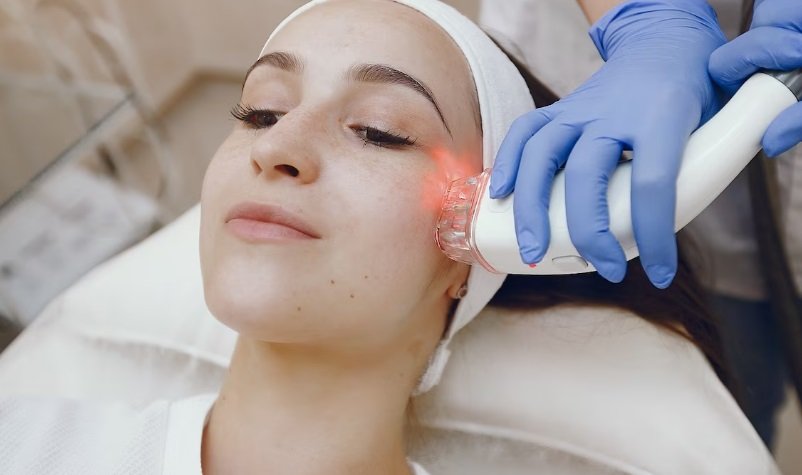The appeal of cosmetic procedures in the quest for beauty and self-improvement has seen a significant rise over the past few years. Whether it’s for a minor tweak or a major transformation, countless individuals are now opting for these medical interventions. However, despite their popularity, it’s important to remember that these procedures come with their set of risks and potential health complications. Being informed about these possible outcomes is crucial for anyone considering undergoing a cosmetic procedure. In this article, we’ll discuss the eight most common health complications arising from cosmetic surgeries.
Infections
One of the risks associated with cosmetic procedures is the possibility of infections. These can occur when bacteria enter the body through incisions or injection sites, leading to complications that might require additional treatment. Symptoms of an infection include redness, swelling, and sometimes fever. Preventing infections is key, and it involves choosing a reputable practitioner who follows robust sterilization techniques and adhering to aftercare instructions meticulously.
However, infections can sometimes be linked to the materials used during the procedure. For instance, silicone injections, while popular for their enhancing effects, can sometimes lead to complications such as infections if not administered correctly or if the body reacts negatively to the substance. In such cases, treatments like silicone injection removal become necessary. This procedure is designed to safely remove the injected material from the body, thereby reducing the risk of further complications and infections.
Scarring
Scarring is a natural part of the body’s healing process, yet it’s also a common concern following cosmetic procedures. The appearance and severity of scars can vary greatly depending on factors such as the individual’s skin type, the nature of the procedure, and the surgeon’s skill set. Scars can manifest as keloid or hypertrophic scars, which are raised above the skin and can be aesthetically displeasing or even uncomfortable.
Minimizing the risk of severe scarring involves carefully following the surgeon’s post-operative care instructions. Strategies such as applying silicone sheets or gels can significantly improve the appearance of scars by hydrating the tissue and reducing inflammation. Additionally, treatments such as laser therapy or microneedling can also be employed to further reduce scar visibility and texture.
Nerve Damage
Although less common than infections or scarring, nerve damage is a potential risk of cosmetic surgery. This complication can result in numbness, tingling, or even loss of muscle function in the affected area. Such outcomes can be temporary or, in rare cases, permanent, depending on the extent of the damage and the body’s ability to heal.
Nerve damage primarily occurs when surgical procedures involve incisions or manipulations near nerve clusters. The risk of experiencing this complication can be significantly reduced by choosing an experienced and skilled surgeon familiar with the anatomy involved in the procedure. Should nerve damage occur, recovery options include physical therapy and medication to manage symptoms and aid in the healing process.
Blood Clots and Deep Vein Thrombosis (DVT)
Surgical procedures, particularly those involving extended periods of immobility, can elevate the risk of developing blood clots or Deep Vein Thrombosis (DVT). DVT results from blood clotting in a deep vein, usually in the legs, leading to pain, swelling, and redness. If a clot dislodges and travels to the lungs, it can cause a life-threatening condition known as a pulmonary embolism.
Preventing DVT involves moving around as soon as it’s safe after surgery, wearing compression stockings, and, in some cases, taking blood-thinning medications as prescribed by your doctor. Recognizing the signs of DVT and seeking immediate medical attention is crucial for prompt treatment and avoiding serious complications.
Anesthesia Complications
Anesthesia is a critical component of many cosmetic procedures, enabling patients to undergo surgery without pain. However, it comes with its own set of risks, including allergic reactions, breathing difficulties, and, in rare cases, anesthesia awareness, where a patient may become semi-aware during the procedure but unable to move or communicate.
The key to minimizing anesthesia-related risks lies in a thorough pre-surgery evaluation to check for any potential allergies or health conditions that could affect anesthesia safety. Skilled anesthesiologists are adept at managing these risks, ensuring that patients are as safe and comfortable as possible during their procedures.
Unsatisfactory Results
Not all cosmetic procedures result in the desired outcome. Unsatisfactory results can range from minor disappointments to significant physical and emotional distress. Factors contributing to unsatisfactory outcomes include unrealistic expectations, communication gaps between the patient and surgeon, or complications during the healing process.
Addressing unsatisfactory results may involve revision surgeries, which come with their own risks and costs. Setting realistic expectations and maintaining open lines of communication with your surgeon can help mitigate the risk of disappointment and ensure that you are fully informed about what can realistically be achieved.
Hematoma and Seroma
A hematoma is a pool of clotted blood outside the blood vessels, and a seroma is an accumulation of fluid that builds up under the surface of the skin. Both are common post-surgical complications that can cause swelling, pain, and sometimes infection.
Preventative measures include following your surgeon’s guidelines on activity restrictions and the use of compression garments after surgery. If a hematoma or seroma does develop, treatment may involve drainage and, in some cases, additional surgery to prevent recurrence and ensure proper healing.
Organ Damage
Though rare, organ damage is a serious complication that can occur during procedures that involve penetration of the body’s tissues, such as liposuction. The surgical instruments, if improperly handled, can puncture an internal organ, leading to severe health consequences.
Selecting a highly experienced and qualified surgeon is crucial to minimizing the risk of organ damage. Surgeons with extensive training and a deep understanding of body anatomy are less likely to cause such complications.
Wrapping Up
Cosmetic procedures can be both exciting and daunting. The possibilities of enhancing one’s appearance and boosting self-confidence come with a set of risks that should not be overlooked. Being informed about these potential health complications is the first step toward a safer and more positive outcome. Choosing the right medical professional, clearly communicating your expectations and concerns, and strictly adhering to pre and post-operative care instructions are key factors in minimizing risks. Remember, the goal of any cosmetic procedure should not only be to improve physical appearance but also to ensure one’s health and safety throughout the process.



